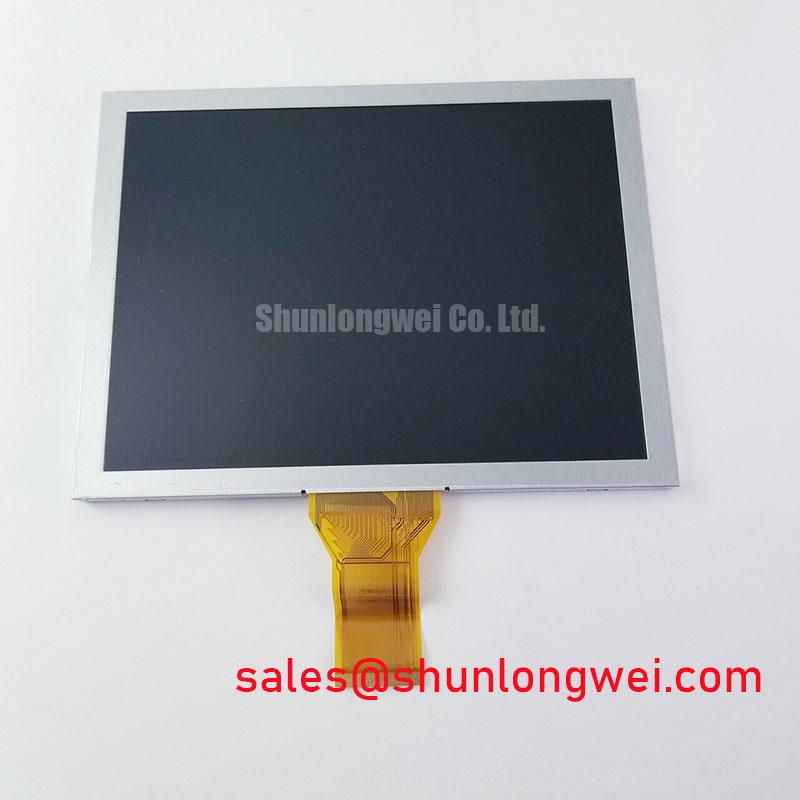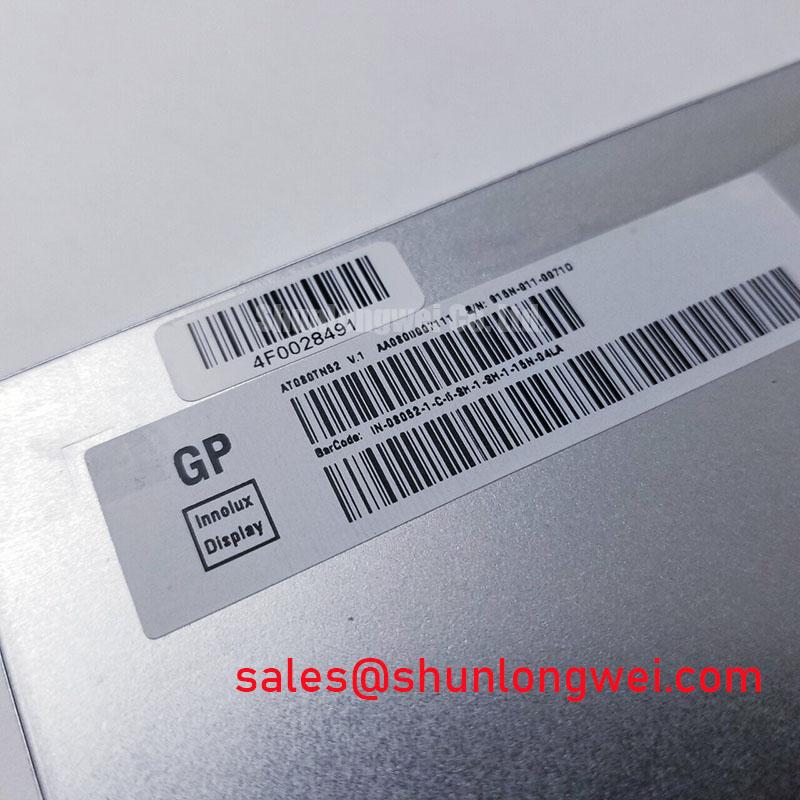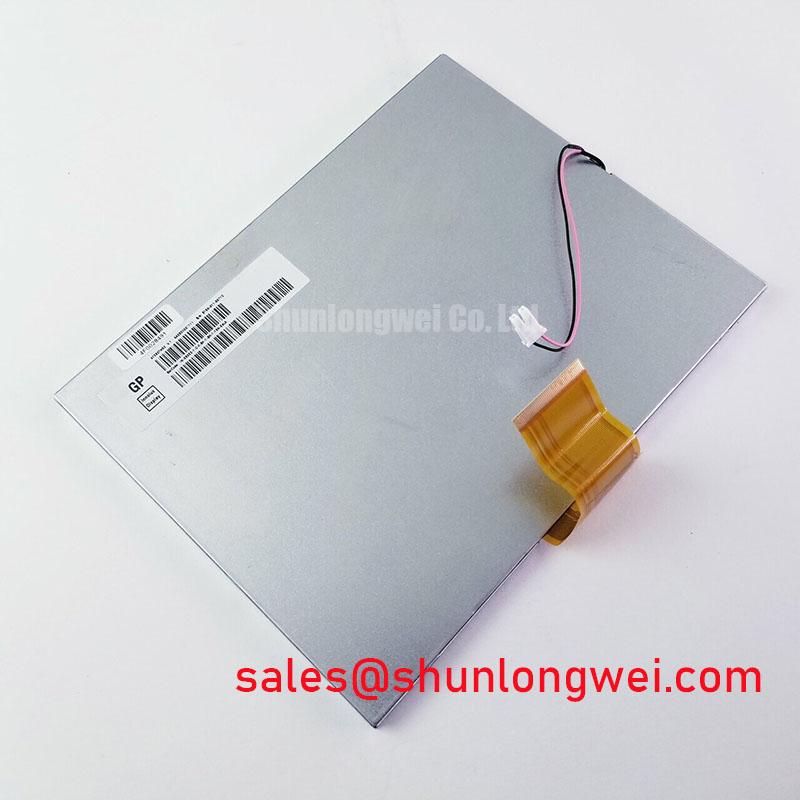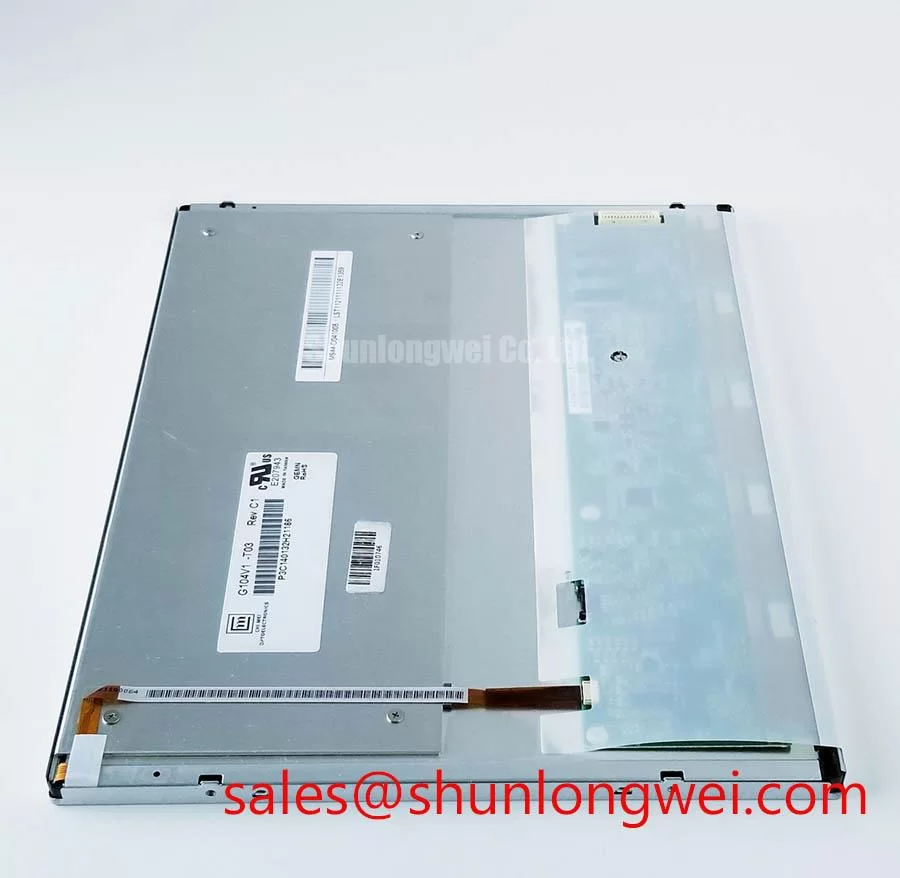Content last revised on November 21, 2025
AT080TN52 V.1: Engineering Reference for the 8.0-inch 800x600 TFT Display Module
Introduction and Core Specifications
An Integrator's Display for Proven System Designs
The Innolux AT080TN52 V.1 is an 8.0-inch a-Si TFT-LCD module delivering a practical and reliable human-machine interface solution for a wide range of embedded applications. Engineered for straightforward system integration, it combines a standard resolution with a highly compatible parallel interface. Key specifications include an 8.0-inch diagonal screen, an 800x600 SVGA resolution, and a parallel RGB (1 ch, 6/8-bit) 50-pin interface. The primary benefits are its proven design, facilitating rapid deployment, and a balanced feature set for cost-effective development. This display addresses the need for a non-proprietary, easily sourced panel for both new designs and legacy system upgrades. For systems requiring a durable and easy-to-implement display with a 4:3 aspect ratio, the AT080TN52 V.1 offers a validated and efficient pathway from design to production.
Key Parameter Overview
Highlighting Critical Specifications for Integration
The technical specifications of the AT080TN52 V.1 are centered on reliability and ease of integration into established system architectures. The following parameters are crucial for design and evaluation.
| Parameter Category | Specification | Engineering Significance |
|---|---|---|
| Display & Optical | 8.0-inch Diagonal, TN, Normally White, Transmissive | Standard industrial size with technology optimized for low power consumption and fast response times. |
| Resolution & Aspect Ratio | 800 (RGB) × 600 [SVGA], 4:3 Aspect Ratio | Provides clear, concise imaging for typical GUI applications without requiring high-end graphics processing. |
| Luminance & Contrast | 250 cd/m² (Typ.), 500:1 Contrast Ratio (Typ.) | Delivers adequate brightness and image depth for indoor and controlled-environment industrial applications. |
| Interface Type | Parallel RGB (1 channel, 6/8-bit), 50-pin FPC | Enables direct connection to a wide range of microcontrollers and processors, simplifying driver development. |
| Backlight System | WLED, Edge Light Type, 20,000 hours (Min.) lifetime | Ensures long-term operational reliability and consistent illumination. |
| Operating Temperature | -20°C to 70°C | Supports deployment in a variety of challenging industrial and commercial environments. |
Download the
Application Scenarios & Value
System-Level Benefits in Embedded and Industrial Systems
The AT080TN52 V.1 is best suited for applications where reliability, ease of integration, and a standard form factor are paramount. Its design provides significant value in both legacy system maintenance and new, cost-sensitive product development. A prime high-fidelity engineering scenario is the upgrade of an aging industrial control panel. Many existing Human-Machine Interfaces (HMIs) utilize displays with SVGA resolution and parallel interfaces. The challenge for engineers is to source a replacement panel that minimizes hardware and software redevelopment. The AT080TN52 V.1's 800x600 resolution and 50-pin parallel RGB input make it an ideal candidate for such drop-in replacements, preserving the existing system's architecture and reducing validation time and cost. Its wide operating temperature range further ensures it can withstand the demanding conditions of a factory floor. This module is also commonly specified for portable DVD players, digital photo frames, and specialized measurement equipment. For designs that require a similar 8.0-inch form factor but with alternative optical performance, the related AT080TN64 offers a different set of specifications for evaluation.
Frequently Asked Questions (FAQ)
Engineering-Focused Inquiries
What are the primary implications of the parallel RGB interface for system design?
The parallel RGB interface offers a direct, uncompressed connection to a host processor, which simplifies the driver protocol and minimizes latency. However, it requires a higher pin count (up to 24 data lines plus control signals) from the microcontroller or FPGA compared to serial interfaces like LVDS. This makes it ideal for systems where the host processor has abundant I/O and direct control is preferred.
How does the 250 cd/m² brightness level impact application suitability?
A typical luminance of 250 nits is well-suited for indoor industrial controls, medical devices, and consumer electronics where ambient lighting is controlled. It is not optimized for direct sunlight readability, which would require significantly higher brightness and specialized surface treatments. This makes the AT080TN52 V.1 a cost-effective choice for its intended operating environments. What is the benefit of a WLED backlight with a 20,000-hour lifespan? It provides a stable and reliable light source for extended operational use, reducing maintenance and replacement costs.
What does the 70/70/50/70 (Typ.) viewing angle specification mean for user interface design?
This TN panel specification indicates viewing angles of 70° left/right, 50° up, and 70° down (at a contrast ratio of ≥10). The optimal viewing direction is from 6 o'clock. For designers, this means the user interface should be oriented so the user is primarily viewing the screen straight-on or from below for the most accurate color and contrast representation. This is a critical consideration for fixed-mount HMIs and portable devices.
Technical Deep Dive
A Closer Look at the 50-Pin Parallel RGB Interface for Direct System Integration
The selection of an interface is a critical decision in display integration. The AT080TN52 V.1 utilizes a Parallel RGB interface, a foundational technology in the TFT-LCD world. This interface transmits red, green, and blue color data simultaneously over separate lines, synchronized by pixel clock (DCLK), horizontal sync (HSYNC), and vertical sync (VSYNC) signals. The primary advantage is its simplicity from a data protocol standpoint; it is essentially a direct pipe from the system's frame buffer to the display driver, requiring minimal data packetization or protocol overhead.
To understand its function, consider the interface as a multi-lane highway dedicated to visual information. Each color (R, G, B) has several dedicated lanes (6 or 8, for 18-bit or 24-bit color), and all traffic moves at the same time, controlled by traffic lights (the sync signals). This direct, high-bandwidth connection is highly efficient for displaying uncompressed video and rapidly changing GUI elements. It allows engineers to have precise, real-time control over the display content directly from a general-purpose processor, a key benefit in many embedded system designs. This contrasts with serial interfaces like LVDS, which act more like a high-speed train, packaging data into packets to travel over fewer tracks, thus requiring dedicated serializers and deserializers (SerDes).
From a strategic perspective, specifying a module like the AT080TN52 V.1 with its standard parallel interface mitigates supply chain risks associated with more proprietary or complex interface technologies. It ensures broader compatibility with a multitude of processors and FPGAs from different vendors like AUO, simplifying long-term product support and component sourcing for industrial equipment with lifecycles that can exceed a decade.









